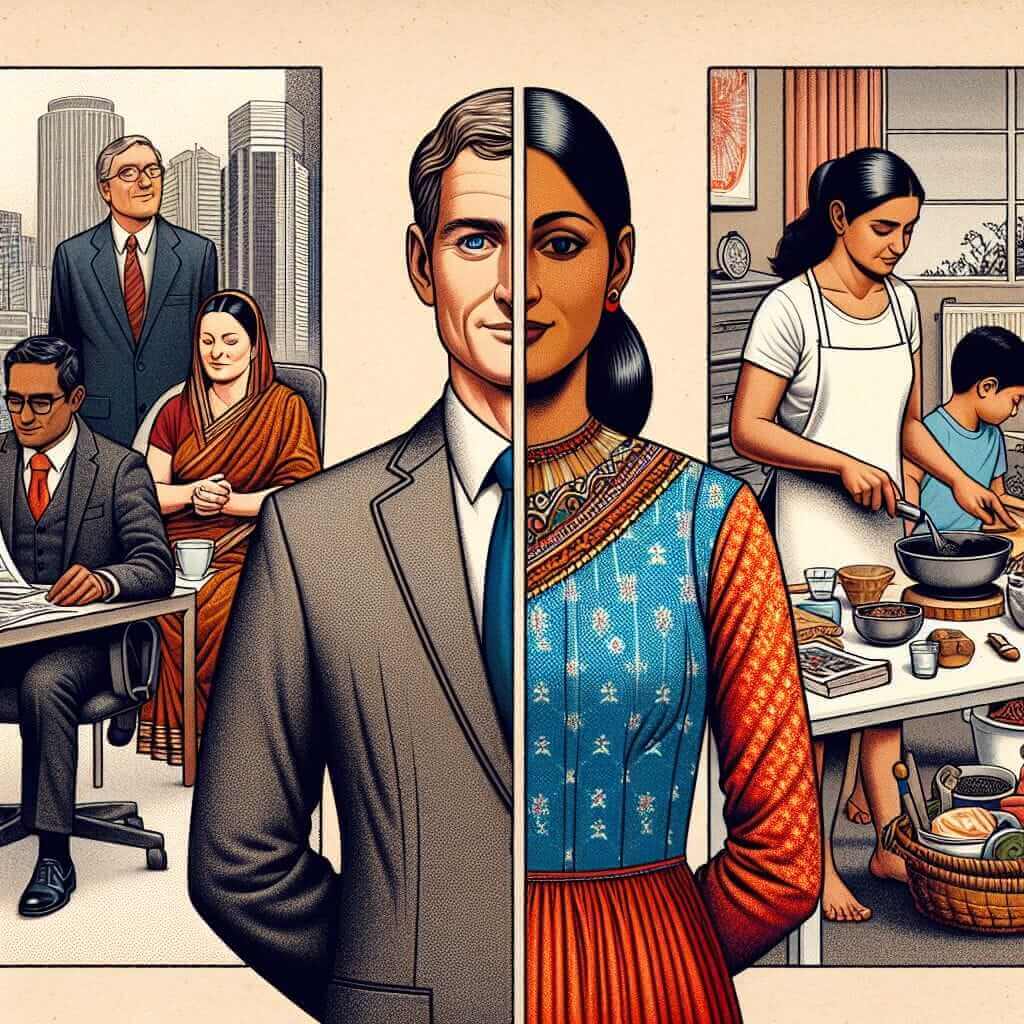The Reading section of the IELTS exam is designed to evaluate various comprehension skills through different types of texts. The topic of “How does media representation affect gender equality?” is not only highly relevant but also insightful given today’s global environment. Understanding how media representation shapes gender perceptions is essential, making it a likely candidate for a reading passage in future IELTS exams.
In previous IELTS exams, topics related to gender, media, and social issues have appeared frequently, reflecting their significance in modern discussions. The increasing awareness and dialogue about gender equality make it highly probable that such a theme could be seen in forthcoming exams.
Practice Reading Passage
Media Representation and Gender Equality
The media’s role in shaping public perception is profound. Over the years, the portrayal of different genders in media has significantly influenced societal norms and expectations. The way men and women are depicted in films, television, news, and online platforms can reinforce or challenge stereotypes. While media can be a powerful tool for promoting gender equality, it has often been criticized for perpetuating gender biases.
In many contexts, men are frequently shown in positions of power and decision-making, whereas women are often depicted in domestic roles or as objects of beauty. This skewed representation can limit the opportunities and aspirations of both genders. For instance, young boys seeing men in dominant roles may feel pressured to conform to these power-centric norms, while young girls might internalize the idea that their value lies in physical appearance rather than abilities.

On the other hand, positive media representation can have the opposite effect, promoting gender equality and providing diverse role models for both genders. Programs that feature men in caregiving roles or women in leadership positions can help dismantle traditional stereotypes and inspire individuals to pursue a broader range of possibilities. Additionally, the increasing visibility of non-binary and transgender individuals in media is a step towards inclusivity and recognition of gender diversity.
However, the impact of media on gender perceptions is not straightforward. Factors such as culture, education, and personal beliefs interact with media messages. The portrayal of genders in a progressive manner in one country may be deemed inappropriate in another due to differing cultural norms. Thus, while media represents a pivotal influencer of gender perceptions, its effects are mediated by a host of external factors.
Practice Questions
Questions 1-2
Choose the correct answers from the choices given (A, B, C, or D):
-
According to the passage, how are men typically represented in media?
- A. As caregivers
- B. As objects of beauty
- C. In positions of power
- D. In domestic roles
-
What is one potential positive outcome of diverse gender representation in media?
- A. Increasing viewership ratings
- B. Reinforcing traditional stereotypes
- C. Providing diverse role models
- D. Limiting personal beliefs
Questions 3-5
Do the following statements agree with the information given in the text? Write:
- YES if the statement agrees with the information
- NO if the statement contradicts the information
- NOT GIVEN if there is no information on this
- Young girls may feel that their value is based on their abilities due to media representation.
- The impact of media on gender perceptions can vary based on cultural context.
- Media representation only negatively affects gender equality.
Questions 6-7
Complete the sentences with NO MORE THAN THREE WORDS from the passage:
- Positive media portrayal can help dismantle __.
- The increasing visibility of __ individuals promotes inclusivity.
Answer Key and Explanations
- C. Men are typically shown in positions of power and decision-making.
- C. Providing diverse role models can help dismantle traditional stereotypes.
- NO. The passage states that girls might internalize the idea that their value lies in physical appearance.
- YES. Cultural norms can influence how media representations are perceived.
- NO. The passage discusses both positive and empowering portrayals.
- Traditional stereotypes
- Non-binary and transgender
Common Mistakes
- Overgeneralization: Avoid assuming that media representation only has negative effects. The passage highlights both positive and empowering portrayals.
- Ignoring Context: Remember the cultural context when discussing media’s impact. Different cultures may interpret representations differently.
Vocabulary
- Skewed (adj.): presented in a biased or distorted way.
- Pronunciation: /skuːd/
- Example: The media often presents a skewed view of gender roles.
- Aspirations (n.): strong desires to achieve something.
- Pronunciation: /ˌæspəˈreɪʃənz/
- Example: Media can influence the aspirations of young people.
Grammar Focus
Passive Voice
- Structure: be + past participle
- Example: “Men are frequently shown in positions of power.”
- Usage: Used to emphasize the action rather than the doer.
Modals of Possibility
- Structure: may/might/can/could + base verb
- Example: “Media representation can limit the opportunities.”
- Usage: Convey possibility or ability.
Tips for Improving Reading Score
- Skim and Scan: Quickly glance through the text to get the gist before diving into the questions.
- Time Management: Allocate time wisely, making sure to leave time for reviewing answers.
- Practice Regularly: Consistent practice with diverse topics will enhance your reading skills and familiarity with question types.